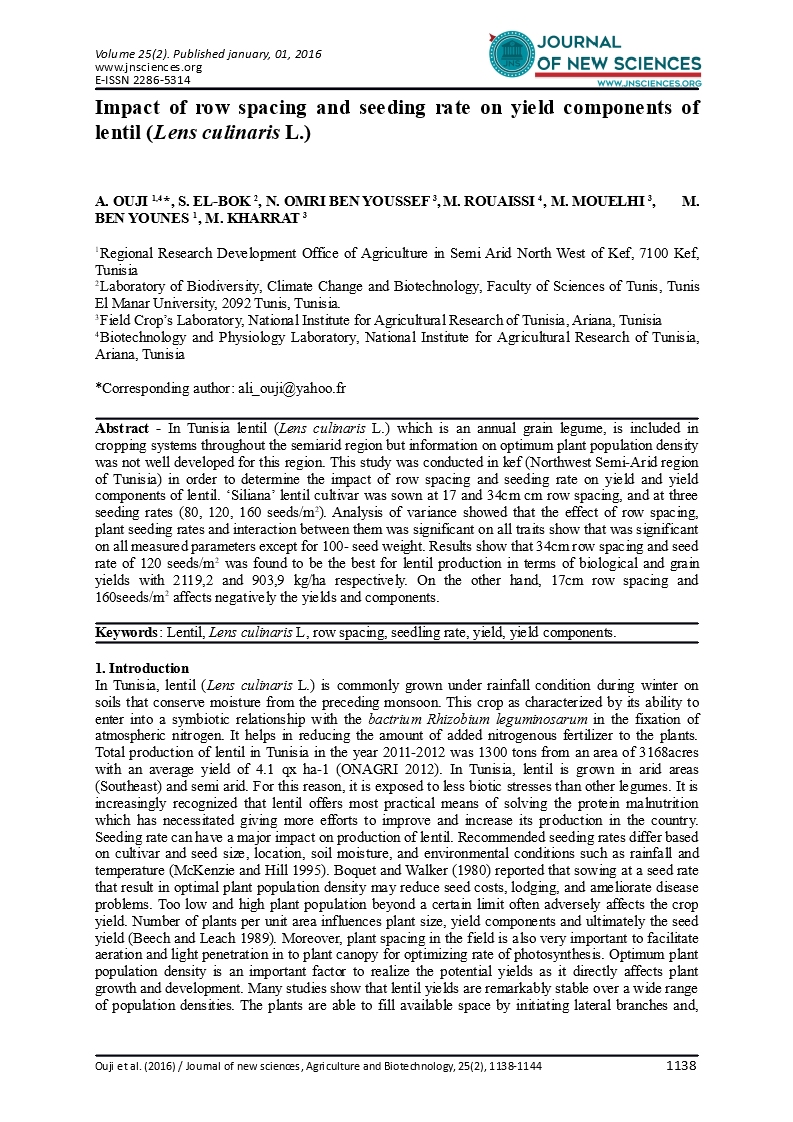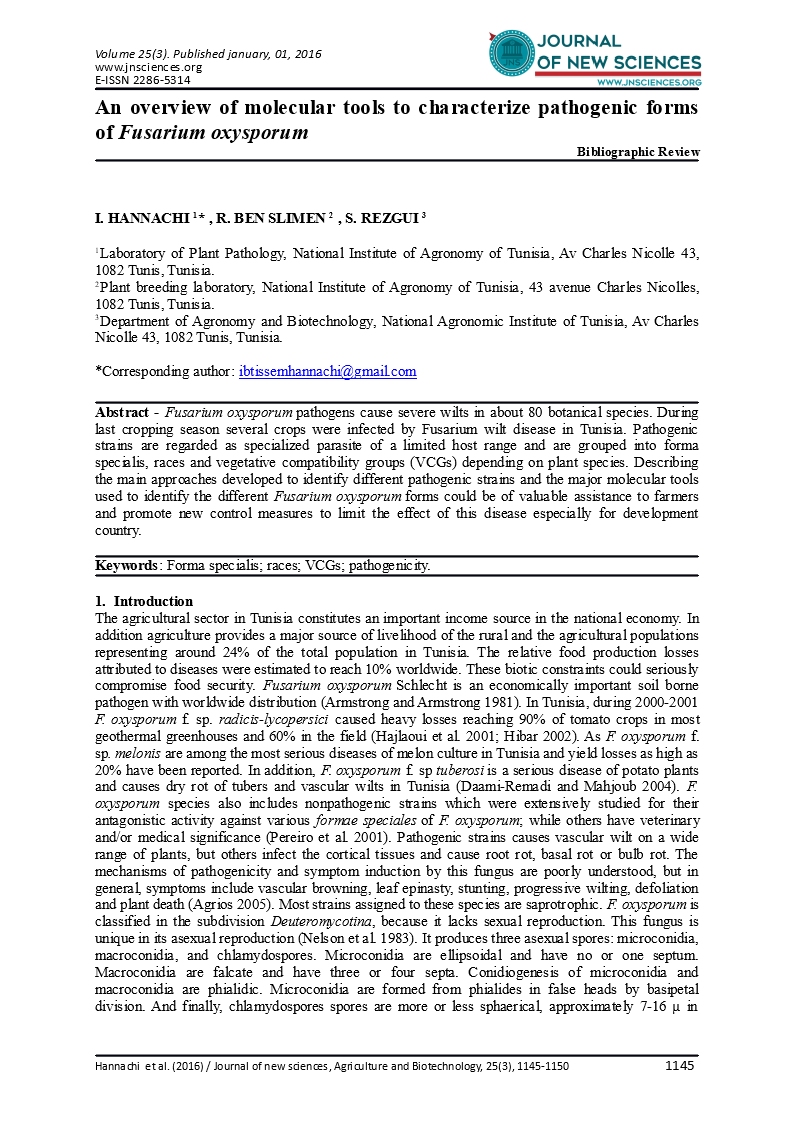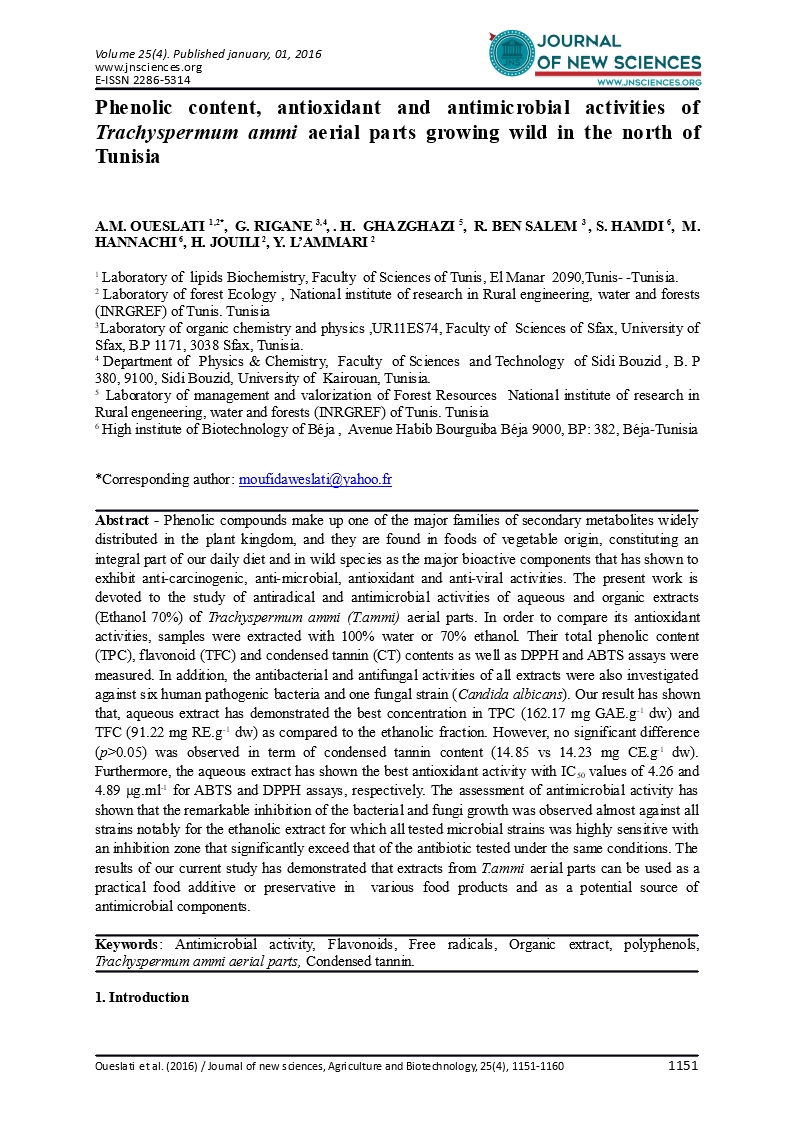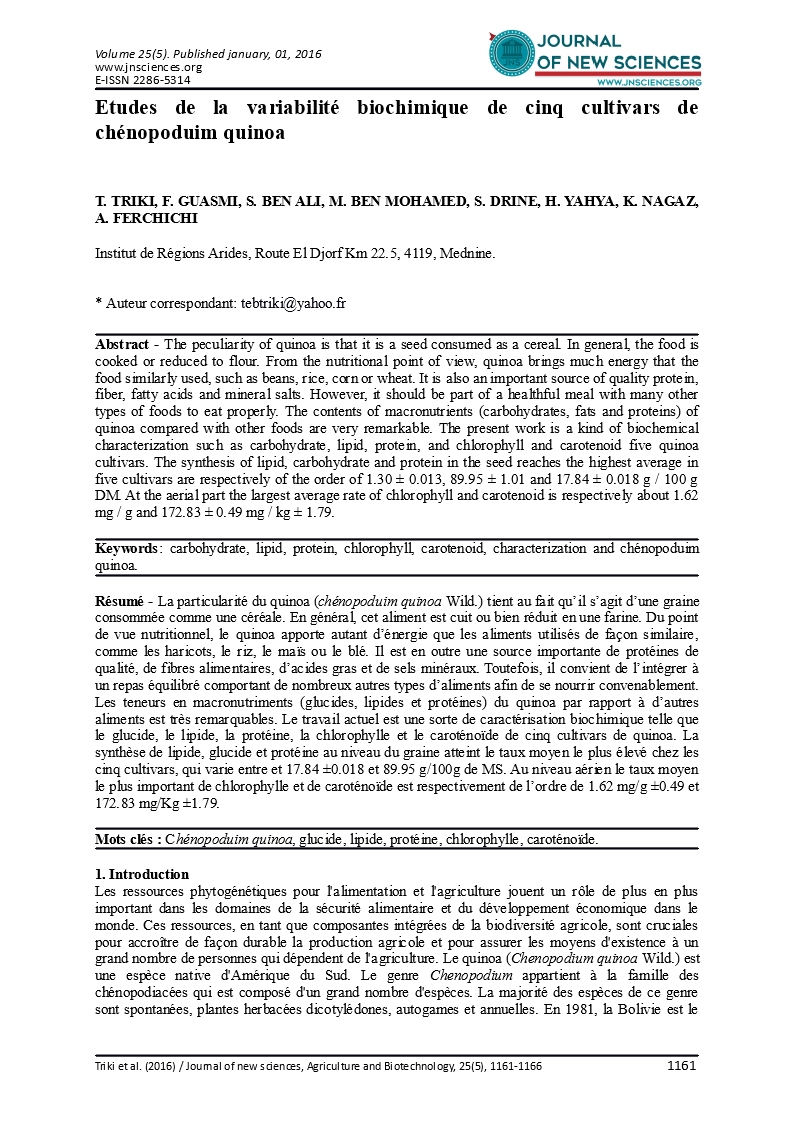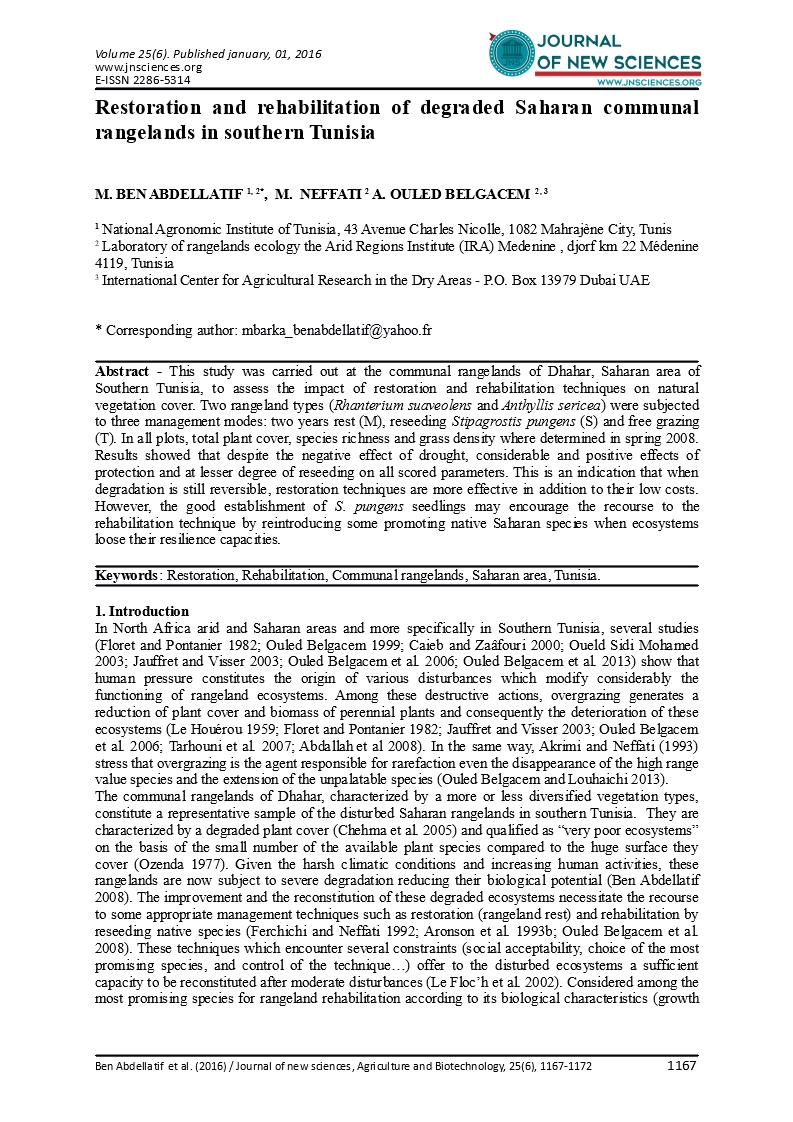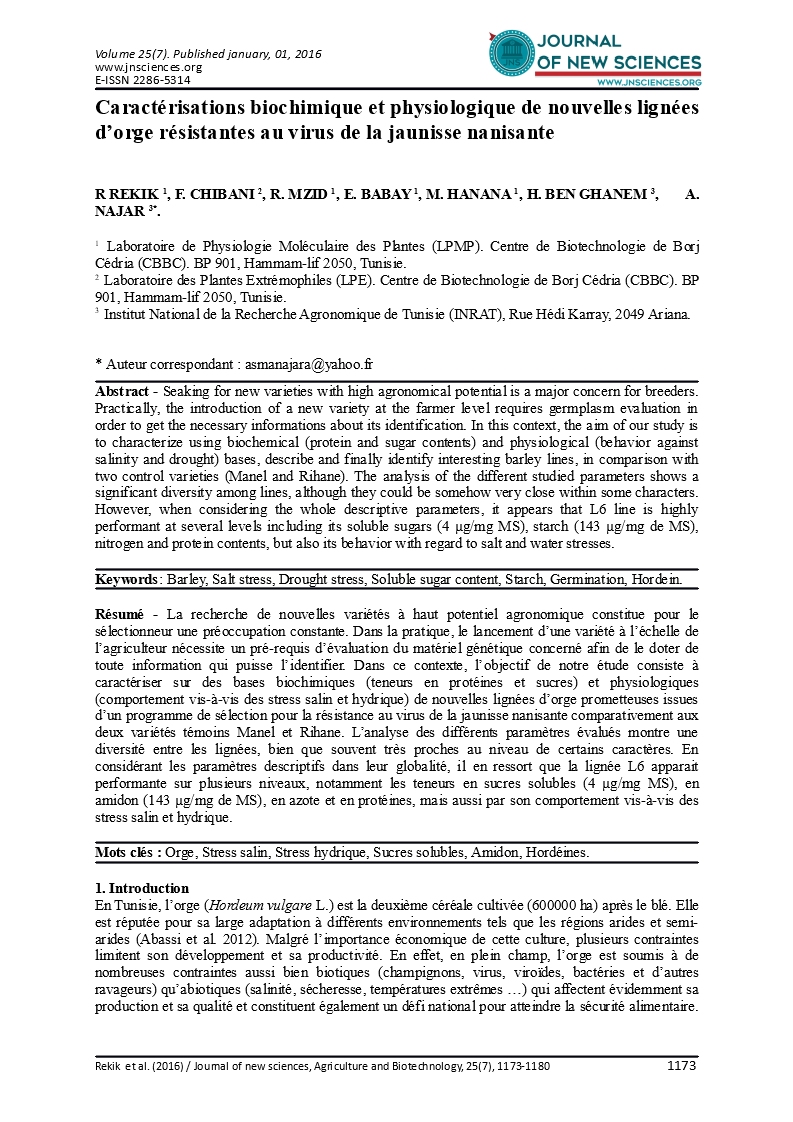- Category: Volume 25
- Hits: 12411
Phosphorus fertilization effect on common bean (Phaseolus vulgaris L.)-rhizobia symbiosis
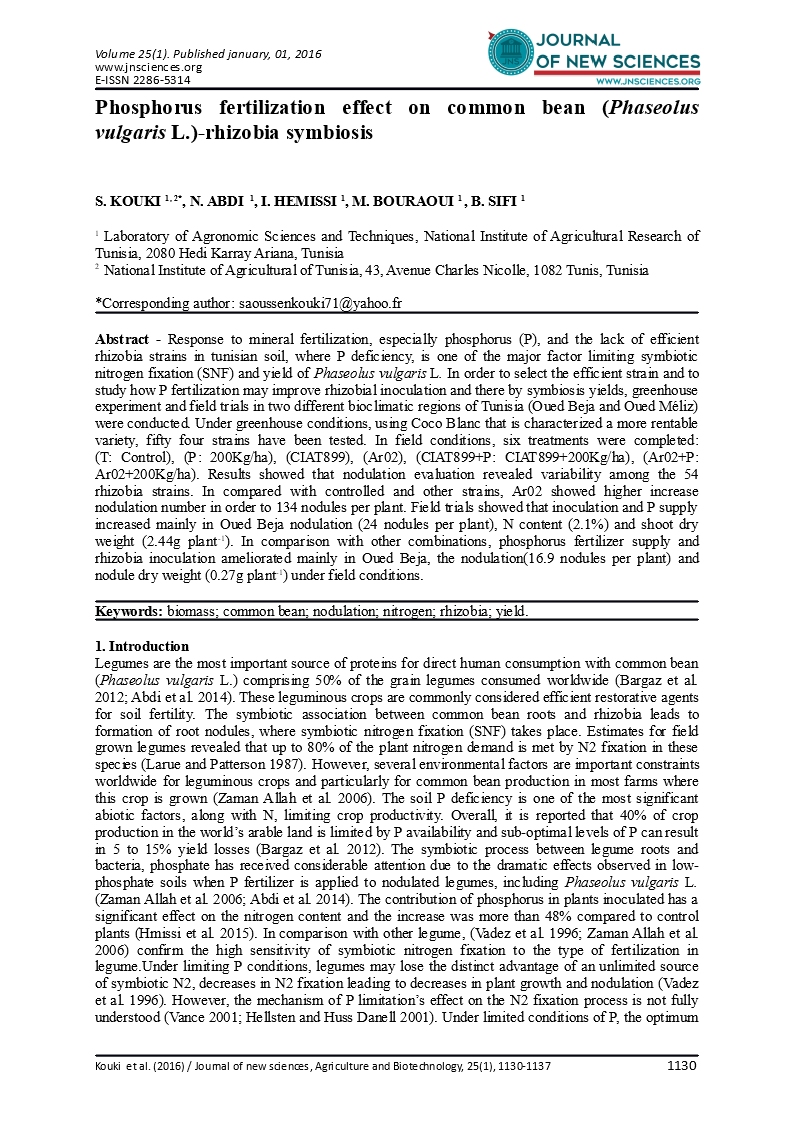
S. KOUKI 1, 2*
N. ABDI 1
I. HEMISSI 1
M. BOURAOUI 1
B. SIFI 1
1 Laboratory of Agronomic Sciences and Techniques, National Institute of Agricultural Research of Tunisia, 2080 Hedi Karray Ariana, Tunisia
2 National Institute of Agricultural of Tunisia, 43, Avenue Charles Nicolle, 1082 Tunis, Tunisia
Abstract - Response to mineral fertilization, especially phosphorus (P), and the lack of efficient rhizobia strains in tunisian soil, where P deficiency, is one of the major factor limiting symbiotic nitrogen fixation (SNF) and yield of Phaseolus vulgaris L. In order to select the efficient strain and to study how P fertilization may improve rhizobial inoculation and there by symbiosis yields, greenhouse experiment and field trials in two different bioclimatic regions of Tunisia (Oued Beja and Oued Méliz) were conducted. Under greenhouse conditions, using Coco Blanc that is characterized a more rentable variety, fifty four strains have been tested. In field conditions, six treatments were completed: (T: Control), (P: 200Kg/ha), (CIAT899), (Ar02), (CIAT899+P: CIAT899+200Kg/ha), (Ar02+P: Ar02+200Kg/ha). Results showed that nodulation evaluation revealed variability among the 54 rhizobia strains. In compared with controlled and other strains, Ar02 showed higher increase nodulation number in order to 134 nodules per plant. Field trials showed that inoculation and P supply increased mainly in Oued Beja nodulation (24 nodules per plant), N content (2.1%) and shoot dry weight (2.44g plant-1). In comparison with other combinations, phosphorus fertilizer supply and rhizobia inoculation ameliorated mainly in Oued Beja, the nodulation(16.9 nodules per plant) and nodule dry weight (0.27g plant-1) under field conditions.
Keywords: biomass; common bean; nodulation; nitrogen; rhizobia; yield.

